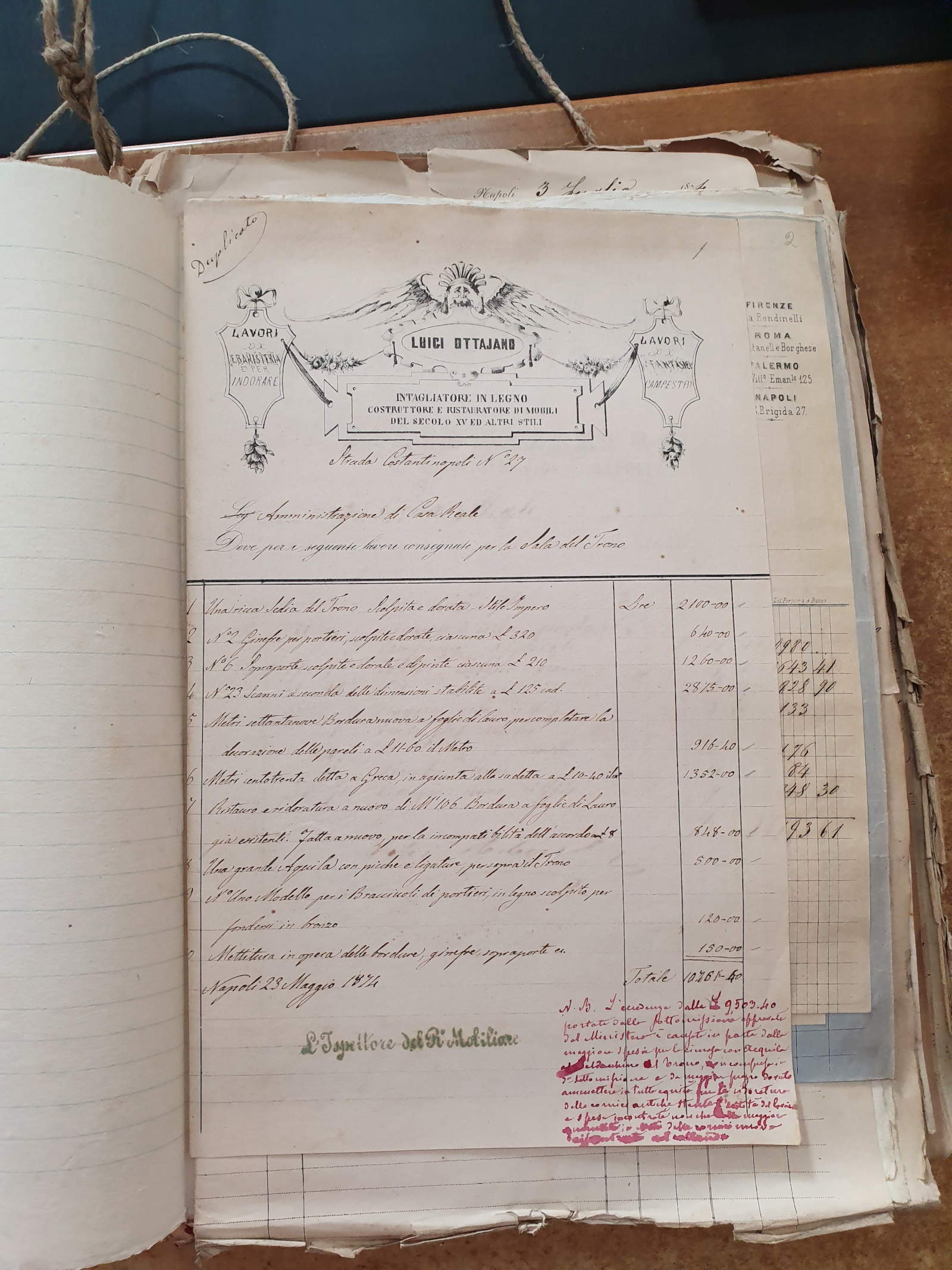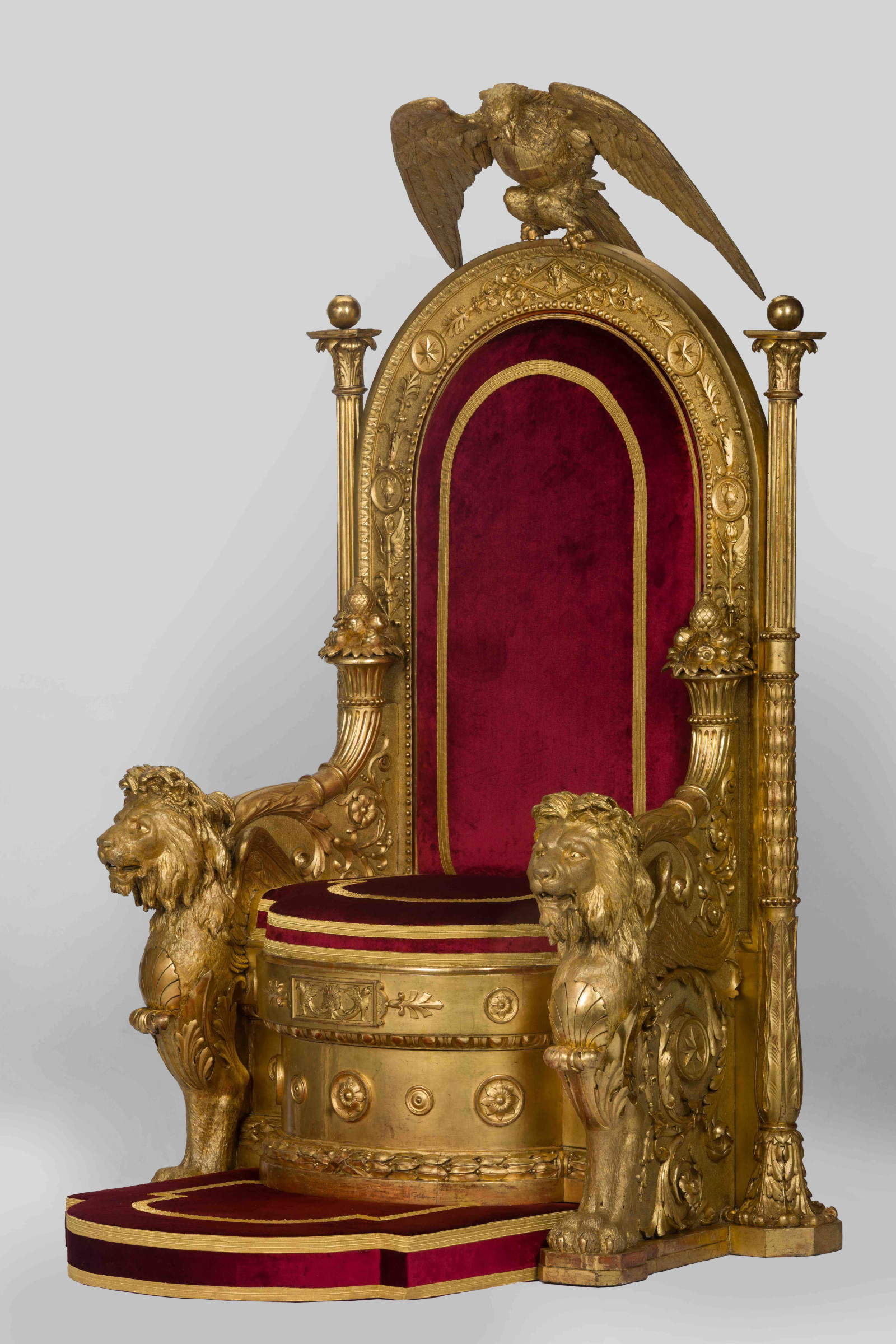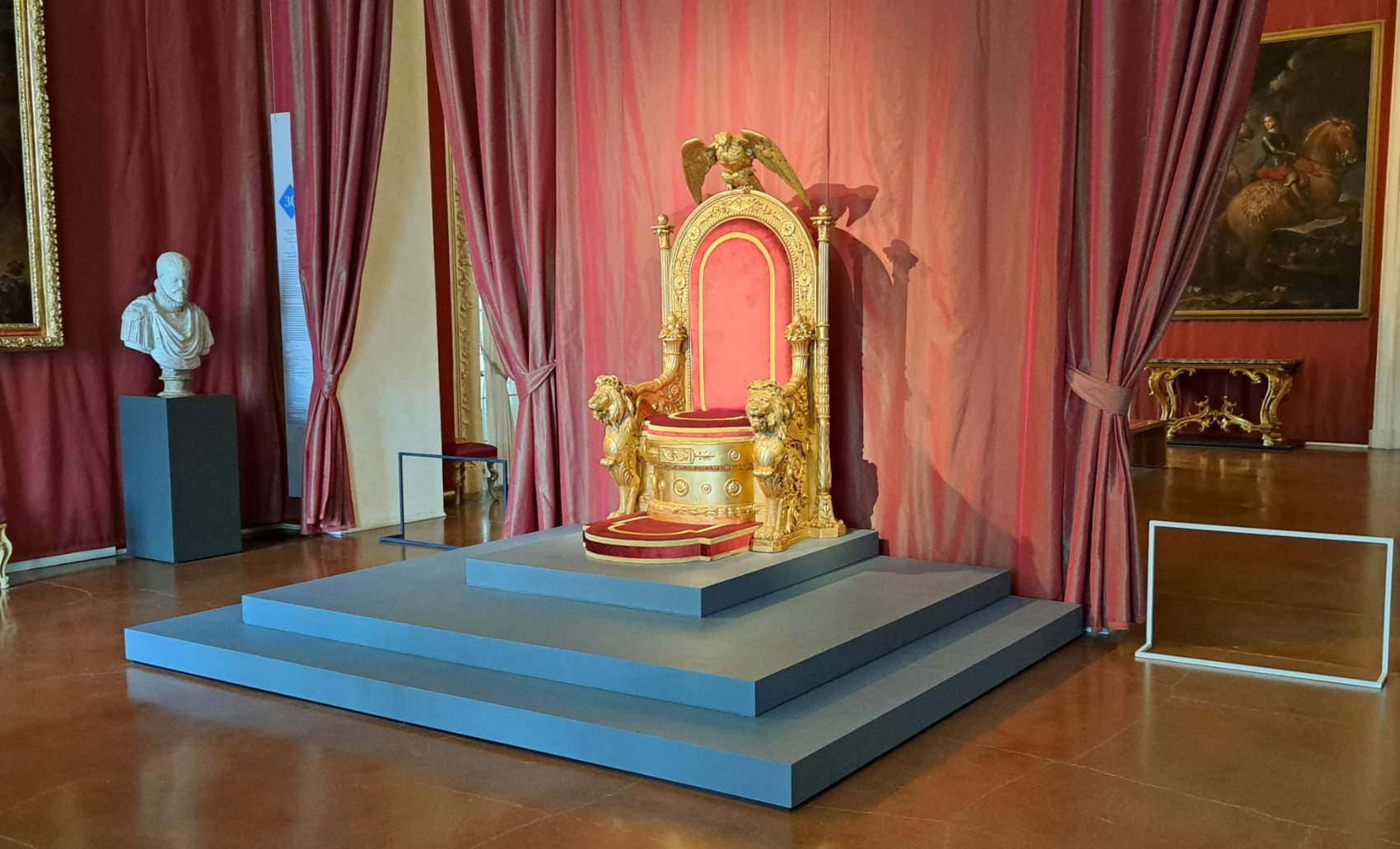The throne in the Royal Palace of Naples, hitherto considered a Bourbon-era work dating from 1845-1850, was actually commissioned by the Savoy family and liquidated in 1874. This discovery postpones its dating by 30 years and, more importantly, radically changes its history, origin and chronological context within the Palace. The news was made public during the presentation of the restoration at the Reggia di Venaria, on the occasion of a preview-scheduled from today until the fall-of the 20th edition of one of the main cultural initiatives promoted by Intesa Sanpaolo as part of Progetto Cultura, which will open at the Palazzo delle Esposizioni in Rome at the end of the summer. The throne will return to the Royal Palace in Naples in February 2026.
On Sept. 12 last year, the throne was transferred to the La Venaria Reale Conservation and Restoration Center in Turin to undergo restoration work made possible thanks to the “Restituzioni” project sponsored by Intesa Sanpaolo. Meanwhile, an 18th-century Bourbon chair was placed in its place.
“The attribution of the Throne of the Royal Palace of Naples to the Savoy age represents a discovery of great historical importance,” commented Museums General Director Massimo Osanna, “which confirms how important Naples and its Palace were for the new rulers, just a few years after the unification of the peninsula. Today the Royal Palace is at the center of an extensive transformation project, made possible thanks to funds from the MIC’s Great Cultural Heritage Project, which will make it possible to return to visitors a renovated museum itinerary that is accessible to all audiences. Our places of culture,” he continued, “are no longer just spaces of conservation and fruition, but are increasingly configured as laboratories of research and innovation. Thanks to the daily work of cultural heritage professionals, we are now able to integrate documentary research, restoration interventions and enhancement projects, also through virtuous collaborations between public institutions and private realities, as demonstrated by the successful experience with the Reggia di Venaria, the Conservation and Restoration Center and Intesa Sanpaolo.”
In the course of these eight months of work, studies and research have been undertaken that have revealed a different dating from that known until now. A dense correspondence has emerged regarding the modernization of the Throne Room desired by the House of Savoy, but the revealing document of the new dating is the invoice submitted by the carver Luigi Ottajano, which attests to the execution of the entire throne (“a rich throne chair carved and gilded Empire style”) and other poses in place for the renovation of the Room. (1874 correspondence).
“The document was found at the State Archives of Naples by scholar Carmine Napoli, now a former official, whom we thank for the sensational discovery,” said architect Paola Ricciardi, delegated manager of the Royal Palace of Naples. “News deepened by colleagues who conducted the study of parallel documentation kept at the Naples State Archives from which the material came.”

Ottajano, formerly the creator with Domenico Morelli of the cradle for the birth of Victor Emmanuel III, donated by the city of Naples to Queen Margaret and now on display at the Royal Palace of Caserta, had hitherto been attributed, as a later addition, only the crowning with the eagle with a cross shield on its breast, the symbol of the new ruling house, while the chair was considered to be of Bourbon age.
The decision to endow the Neapolitan Royal Palace with a throne made from scratch is indicative of the importance the new dynasty attached to the monumental complex and the city that had previously been the capital of the Bourbon Kingdom.
The throne, with a drum seat, features Empire-style elements that hark back to Restoration craftsmanship, such as the armrests decorated with winged lions to great sculptural effect. The octagonal-shaped backrest is adorned with classical-style studs and rosettes that appear, for example, in the throne of Napoleon I, designed by Charles Percier and Pierre-François Fontaine (now in the Louvre).
“The temporary exhibition of the precious Throne of Naples, restored by the La Venaria Reale Conservation and Restoration Center, along the tour route of the Reggia di Venaria,” said Michele Briamonte and Chiara Teolato, president and director of the Consortium of Royal Savoy Residences, during the presentation in Turin, “represents for us a great opportunity that we wanted to seize to pursue the thematic strand dedicated to the history, art and magnificence of the courts - of which Venaria Reale has been a paradigmatic example - inaugurated by the reopening of the complex and continued over the years. The operation was made possible thanks to the Consortium’s close collaboration with the Royal Palace of Naples and the contribution of Intesa Sanpaolo, a virtuous and concrete example of synergy between entities working in the field of safeguarding and enhancing cultural heritage.”
“The collaboration between the Center for Conservation and Restoration ”La Venaria Reale“ and the Royal Palace of Naples was born years ago in the sharing of vision on the importance of preventive and planned conservation, which led the professionals of the Center to conduct a conservation filing campaign and definition of direct activities on the works of the collections of the Palace,” explained Alfonso Frugis, President of CCR “La Venaria Reale.” “Thanks to the joint work, the Royal Palace of Naples was able to have a map of restoration priorities, among which the need for intervention on the throne had also emerged. Today, thanks to the foresight of Intesa Sanpaolo, which is supporting as part of the Restituzioni exhibition the restoration, it has been possible to carry out this challenging intervention that has combined the skills of officials from the Royal Palace of Naples and restorers and scientists from the JRC. A circle that closes with the enhancement in the Royal Palace, to give the right contextualization to the outcomes of the research and restoration. We are therefore extremely proud to have been part of a virtuous gear, which testifies once again how unity is the key to the success of operations of great cultural importance.”
“For more than 35 years, thanks to Restitutions, Intesa Sanpaolo has been at the side of public institutions, participating in the task of protecting and enhancing the national art heritage,” commented Michele Coppola, Executive Director Art, Culture and Historical Heritage Intesa Sanpaolo. “Together, we have so far brought to new light more than 2,500 pieces of the country’s identity history, of which the Throne of the Royal Palace of Naples is an extraordinary example. Today we share its beauty, after new studies and restoration, in the spaces of the Reggia di Venaria, anticipating the great autumn exhibition in Rome that will see the work displayed among the masterpieces of the 20th edition of the program. The initiative confirms the strong link with the cities of Naples and Turin, where the role and activities of our Galleries of Italy foster a deep dialogue with the main realities of the territory.”

 |
| Throne of the Royal Palace of Naples restored. Great discovery: it is not Bourbon, but Savoyan |
Warning: the translation into English of the original Italian article was created using automatic tools. We undertake to review all articles, but we do not guarantee the total absence of inaccuracies in the translation due to the program. You can find the original by clicking on the ITA button. If you find any mistake,please contact us.